Ruth Hull Chatlien's Blog
July 6, 2025
Sunday Review: Last Call at Smokey Row by Pat Camalliere
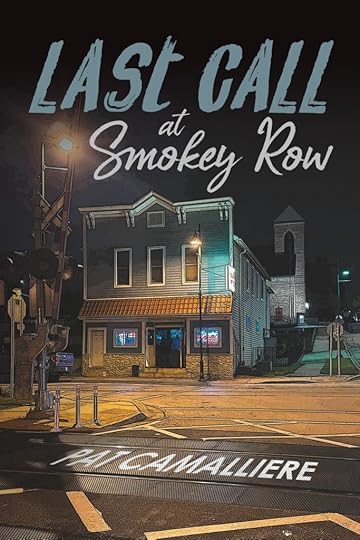
Last Call at Smokey Row is a departure for Pat Camalliere, whose previous novels are part of a series of historical mysteries that take place in Lemont, IL. Although also set in Lemont, the latest novel is more what I’d classify as a contemporary woman’s novel set in the early 1980s.
The main character and narrator, Jane Archer, is someone many people can relate to. Raised in a Catholic family, she pursued the goals she thought a good, responsible girl should: education, marriage, a suitable career for a woman—in her case, teaching high school biology. But at the age of 33, she finds herself a divorced ex-teacher, living alone for the first time in her life, working a dead-end job in a grocery store, and wondering if she has the stamina and motivation to figure out what to do next.
Invited by a coworker who participates in a pool league, Jane visits a local tavern called Sami’s. There she meets a collection of people seemingly as adrift as she is: a divorced father being bled dry by his ex, a young woman with no apparent ambition, a traumatized Vietnam vet who rarely talks, another divorced man with the burden of caring for an agoraphobic and hostile mother, and an assortment of other drunks, gamblers, bullies, and weirdos.
Her newfound acquaintances force Jane to think deeply about questions such as, “Why are some people able to find purpose in life, and why do others remain lost or even mired in past heartache?” “Am I taking too long to move forward from my recent failures?” “Do I even know what I want?” Which of us has not asked ourselves questions like these?
In time, Jane builds relationships at Sami’s, some closer than others. With the help of one of her newfound friends, she slowly begins to find a new career path and perhaps even the hope of romance.
With such a diverse mix of personalities, problems in the group are sure to bubble up. One conflict gets resolved in a way that I guarantee you won’t see coming. Through it all, Jane responds to the events around her by continuing to ask questions and to grow. Despite the large cast of characters, it is her story above all, and Camalliere brings it to a satisfying end.
April 13, 2025
Sunday Review: Red Clay, Running Waters by Leslie K. Simmons
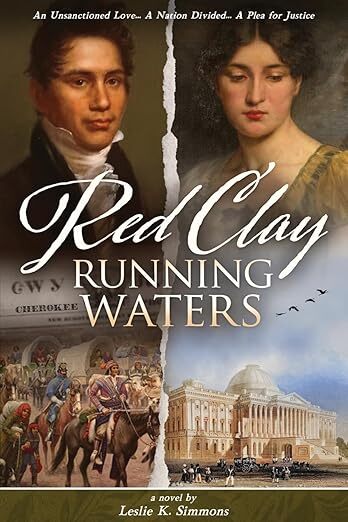
Many of us know at least a minimal amount about the tragic Trail of Tears, in which the U.S. government forced the Five Civilized Tribes of the Southeast (Cherokee, Chickasaw, Choctaw, Creek, and Seminole) to leave their ancestral lands and move to the Indian Territory (now the state of Oklahoma) west of the Mississippi River. Thousands died during the journey.
What is less known are the events that led up to this calamitous outcome. In her biographical novel Red Clay, Running Waters, Leslie K. Simmons provides an in-depth look at how the Cherokee fought to retain their homeland by focusing the story on one important figure: Skaleeloskee, known to history as John Ridge. The son of a Cherokee leader, John was sent from his home to a mission school in Connecticut at the age of 16. He excelled at his studies and became an accomplished orator. He also fell in love with Sarah Bird Northrup, the white daughter of the school’s steward.
In the 1820s, a relationship between a native man and white woman was controversial, and the young couple’s desire to marry creates a firestorm of opposition. However, the two had formed a deep bond, forged in part because of their attraction to each other but more importantly because of shared ideals. Simmons excels at portraying their love, both in the beginning infatuation stage and over the course of time. After persisting for two years, John and Sarah finally were allowed to marry in 1824. The prejudice and discrimination they faced because of their relationship was merely a foretaste of what was to come.
Sarah traveled with John to Georgia to live in the Cherokee Nation, which stretched across parts of Tennessee, Georgia, and Alabama. The Cherokee were in the process of developing a constitutional government similar to that of the United States. John became a member of the National Council. However, because of Americans’ lust for good farmland and the 1828 discovery of gold in Georgia, the United States began to pressure the Cherokee to cede their homeland and move.
One mistake whites often make when thinking of native peoples is assuming that they are somehow monolithic in their thinking and in their attitudes toward whites. As I learned while writing my own novel Blood Moon: A Captive’s Tale, that is often not the case. Factions existed among the Cherokee with strongly held, opposing opinions about how to deal with the U.S. government’s demands. John, supported by Sarah, fought hard for what he thought would be the best solution, but equally passionate leaders argued for other outcomes.
Simmons portrays the conflict in detail in her novel. The arguments were complex, and some of the people involved were inconsistent and at times devious. Although highly educated and skilled at both writing and speaking, John wasn’t always trusted by more traditional Cherokee who viewed him as “too white.” The situation in the novel vividly shows the dilemma often faced by native peoples: do they adopt white ways to gain tools to help fight for their people, or is the cost too high in the loss of their culture and perhaps legitimacy in the eyes of their people?
This novel will be especially appreciated by readers who enjoy policy debates and situations with multiple shades of grey rather than a clear blank-and-white outcome.
March 23, 2025
Sunday Review: The Stolen Queen by Fiona Davis
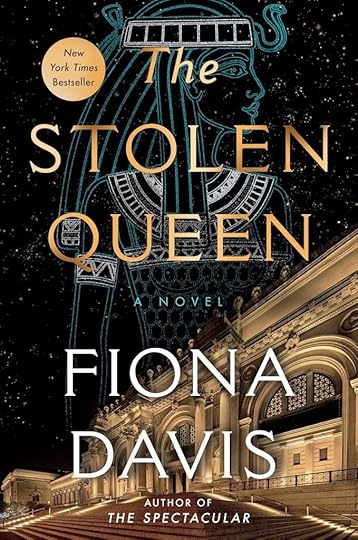
I love Fiona Davis’s novels. She’ll chose a famous New York building—the Dakota, Grand Central Terminal, Radio City Music Hall—and create a dramatic story about someone whose life causes her to spend time there in some capacity. Also, ever since I was a child, I have loved to read about ancient Egypt. Something about that long-ago culture never fails to fascinate. That’s why I was so eager to read Davis’s latest effort, a novel that takes place mostly at the Metropolitan Museum of Art but also, in part, in Egypt.
In 1978, 60-year-old Charlotte Cross is an associate curator at the Met in the weeks leading up to what would be the wildly popular exhibit of artifacts from King Tut’s tomb. As a young woman 42 years before, Charlotte had participated in an archaeological dig in Egypt’s Valley of the Kings. There, she made an unexpected and significant find, fell in love, and then suffered an unimaginable tragedy. She hasn’t been back to Egypt since, although she has been secretly doing research that she suspects will overthrow the popular view of Hathorkare, a queen who became pharaoh in her own right. (For fellow ancient Egypt buffs, Hathorkare is loosely based on Hatshepsut.)
The novel’s other protagonist is nineteen-year-old Annie Jenkins, a determined young woman struggling to provide for herself and an unstable mother. While running an errand to the Met for a neighbor, she makes an unsolicited but inspired suggestion that catches the attention of fashion mogul Diana Vreeland. The encounter results in Annie being hired to be Vreeland’s assistant in organizing the Met Gala that year.
The night of the Gala, an act of sabotage threatens an exhibit of irreplaceable costumes, and while everyone is distracted trying to stave off damage, a thief steals one of the museum’s priceless objects: a fragment of a lapis lazuli bust of an Egyptian queen. Charlotte and Annie chase the thief, endangering their lives, but after a struggle, he gets away with the artifact. Blamed unfairly for the sabotage, Annie loses her job.
To try to recover the stolen object, Charlotte travels to Egypt. She is accompanied by Annie, who books a ticket despite Charlotte’s dismissal of her offer of help. While there, the pair uncover more mysteries than they ever expected.
The flashback sections remind me a bit of Agatha Christie’s novels with archaeological settings. First, Davis provides vivid details of life on a dig. Second, when bad things happen, the characters are all too willing to attribute them to a pharaoh’s curse.
The characters of both Charlotte and Annie are strong. Both are plucky women, each trying to establish themselves but burdened by past baggage. Both are products of their respective time periods, each fighting in her own way to go beyond the limits of what woman are expected to be. The secondary character of Diana Vreeland, a historical person, adds spice to the more modern sections of the story.
The end ties up everything perhaps a little too neatly for my taste, but I know that many readers prefer unambiguously happy endings, so I won’t lower my 5-star rating because of that. In short, check out The Stolen Queen—and if you haven’t read Davis’s other novels, give them a try too.
March 16, 2025
Sunday Review: The Boy in the Rain by Stephanie Cowell
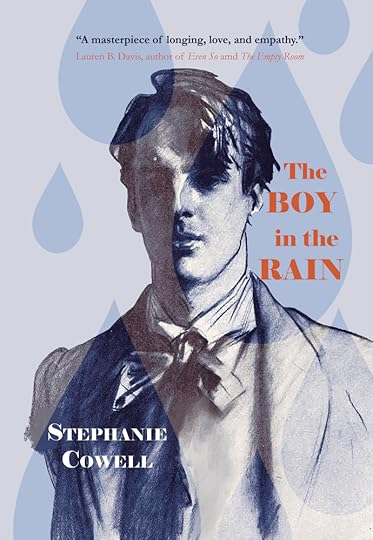
This lovely story tells the story of two men in Edwardian England, a dangerous time for gay relationships. The novel opens in 1903, just eight years after Oscar Wilde was sentenced to two years hard labor after being found guilty of “gross indecency.”
Robbie is a shy, orhpaned young man whose unsympathetic uncle has sent him into the country to study with a clergyman to prepare for university. While there, Robbie meets his neighbor—twenty-nine-year-old Anton, a man who has fled London society to escape a failed marriage and the death of his dreams of promoting a socialist government. Anton is doing what he can to help improve the lives of the poor in the village; Robbie is discovering that, instead of academics, he is drawn inexorably toward art. The two meet and fall in love, beginning a passionate but necessarily secret relationship.
A misunderstanding drives them apart, and Robbie goes to London to enroll in an art school. Tormented by his longing for Anton, he seeks comfort in casual encounters—a risky decision that nearly destroys him.
Eventually, the two reunite. Robbie begins to make a name for himself as a portraitist in London society. On weekends, he returns to the country to be with Anton, who has once again taken up the socialist cause. However, the more renown the two men achieve, the more danger they face from the possible exposure of their illegal relationship.
Both characters are complex, very real, and oh so human. I felt deeply for their dilemma. The portrayal of the time period is well researched and vivid. As the story progresses, I wanted so much for Robbie and Anton to find their happy ever after, yet the fear that such an outcome was impossible hangs over the story like the ever-descending pendulum in Poe’s famous story. To Cowell’s credit, I didn’t know how the novel would turn out until very, very close to the end.
Considering the rising discrimination against the LGBTQ+ community in today’s world, I think this book is an important read.
March 9, 2025
Sunday Review: The Jøssing Affair by J..L. Oakley
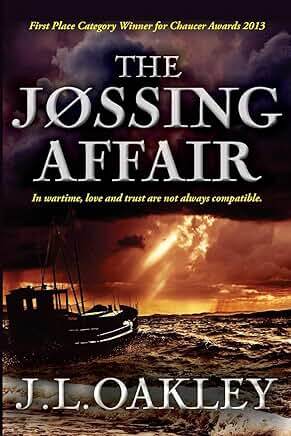
If you enjoy reading WWII historical novels but are looking for a setting other than England or France, I have a recommendation for you! One arena of the war that has been overlooked far too long is occupied Norway. The Jøssing Affair by J. L. Oakley is an excellent contribution toward filling that gap. Germany invaded Norway in April 1940 and gained control of the country within two months. They remained in power until the capitulation of all German forces on May 8, 1945.
As did the residents of other occupied countries, many Norwegians took part in the underground resistance against the Nazis—in spite of horrifying reprisals. These resistance fighters adopted the name of Jøssing, and this novel tells their story by focusing on a fictional fighter named Tora Haugland. Associated with the “Shetland Bus,” which secretly transported arms and people between Norway and Britain, Haugland goes undercover pretending to be a deaf-mute working on a fishing boat and living in a tiny coastal village.
His work places him in constant danger, and the precariousness of his situation increases when he reluctantly falls in love with “the woman”—Anna Fromme, the German widow of an old friend, whom all the villagers ostracize because they believe she betrayed her Jøssing husband to the enemy. Anna is innocent but has other secrets that put her and her young daughter at risk.
Haugland’s network is under constant pressure from Norwegian collaborators who are helping the Gestapo hunt down resistance fighters. The most dangerous of these is Henry Oliver Rinnan, a real-life figure—and sadist—who led a group of informants and personally participated in the torture and murder of many captured Norwegians.
The novel is set during the latter part of the war and dramatically shows the harsh conditions under which Norwegians lived and their excruciating wait for an Allied victory and Norwegian liberation. The characters are well drawn (particularly Haugland and Anna), and the plot has plenty of action and suspense. An added bonus is the many descriptions of Norway and the fascinating tidbits about Norwegian culture and everyday life.
I recommend this book without reservation, and I look forward to reading the two other volumes in Oakley’s series on Norway’s experiences during and after the war.
January 26, 2025
Sunday Review: The Wildes by Louis Bayard
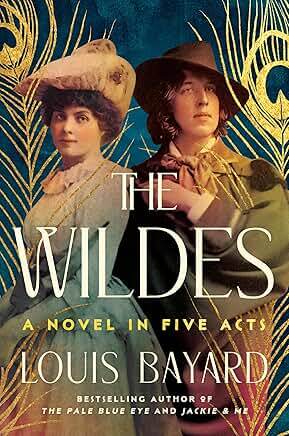
A friend I respect recommended this novel to me, so I bought it without knowing anything more than that it had something to do with Oscar Wilde and his family. I’m ashamed to admit that, despite being a literature major in college, I had no idea that Wilde had a wife and two sons (perhaps because I was educated at a very conservative college that would NEVER dream of teaching this particular writer).
As is appropriate for a novel about a playwright, this story is told in five acts. The first act recounts, from the point of view of Wilde’s wife Constance, a seemingly idyllic summer holiday in the country. Idyllic, that is, until Constance gradually realizes that the relationship between Oscar and one of their guests—Lord Alfred Douglas, son of the Marquess of Queensberry (the man who came up with the rules of boxing)—is more distressingly intimate than she’d suspected.
A brief entr’acte summarizes the scandal that ensued after Queensberry, offended by what he viewed as the corruption of his son, accused Wilde of sodomy. Wilde sued him for defamatory libel, but Queensberry was able to produce evidence that the charge was true. Wilde was convicted of gross indecency for homosexual acts and sentenced to two years hard labor. The punishment destroyed his health, and he died a few years later.
The remainder of the novel examines the effect of the scandal on his family. Act two focuses on Constance’s time in Italy, where she fled under an assumed name (Holland) to protect her boys from the scandal. She was suffering a debilitating illness that was poorly understood at the time and also died too young. Act three focuses on the eldest son, Cyril Holland, and his time as a sniper in World War I, a military assignment that led to his death. In this telling, he is determined to maintain a gruff, “manly” demeanor to differentiate himself from his father. Act four focuses on the younger son Vyvyan Holland in later life and a confrontation with the man whose relationship with Oscar Wilde destroyed the family. The fifth act is speculative, so I won’t describe it except to say that it moved me deeply.
I enjoyed the innovative structure and the opportunity to learn about this aspect of Oscar Wilde’s life. He was an original thinker and an astute observer of society, and I can only wonder what literary gems we lost because he was persecuted to an early death. I recommend the novel to lovers of historical fiction, English literature, and LGBTQ+ issues.
January 19, 2025
Sunday Review: Precipice by Robert Harris
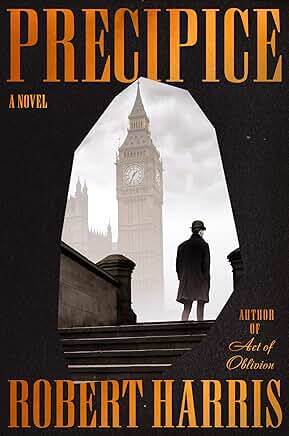
I’ve read and enjoyed many historical novels by Robert Harris. This one, although based on a fascinating premise, did not quite live up to what I’ve come to expect from this author.
When the novel opens in July 1914, UK Prime Minister H.H. Asquith is involved in an affair with socialite Venetia Stanley, member of a wealthy aristocratic family. Stanley is 35 years younger than Asquith; at the beginning of the novel, she is 26 and he is 61. They see each other on social occasions, they walk on Hampstead Heath, he takes her on drives in the curtained back seat of his Rolls Royce, and they send each other passionate letters.
Asquith had long had a penchant for the company of attractive young women, but one thing that makes his relationship with Stanley different from the others is the extent to which he relies on her intelligence and uses her as a sounding board and sometime political advisor. The other difference, of course, is that World War I breaks out in August 1914, a conflict of such complexity and carnage that Asquith faces unprecedented political challenges. As a result, he often writes Stanley three letters a day, discusses confidential cabinet discussions, and even sends her the originals of top secret communiqués.
The novel covers the relatively short time of a single year, but a lot happens. This includes a tragic accident among Stanley’s social set, the tense events leading to the outbreak of war, the planning for the ultimately disastrous Gallipoli campaign, an insider’s look into political infighting among British cabinet members, and an investigation launched by Scotland Yard into who’s responsible for top secret telegrams being found discarded across southern England.
The characters are well developed, and I particularly liked the main female character, a clever, insightful woman bored with her shallow social scene and searching for something more meaningful in her life.
What eventually cast a slight pall of my enjoyment of the book was Asquith himself. His love for Venetia Stanley was obsessive, self-indulgent, and reckless, and his letters to her (quoted from the originals) became tedious and whiny. As a result, I was not sorry for the book to end.
Despite that, I still rate the novel a four-star read. If you can get the audiobook book, give it a listen. The incomparable Samuel West is the narrator.
January 12, 2025
Sunday Review: Remarkable Creatures by Tracy Chevalier
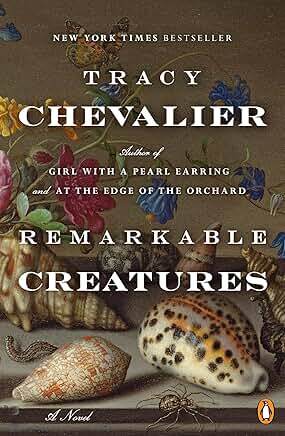
Remarkable Creatures is a historical novel about two remarkable women who lived in the first half of the 1800s: Mary Anning and Elizabeth Philpot. During a time when women were thought not to have the intellectual capacity to understand science, let alone contribute to its store of knowledge, these two made fossil discoveries that changed our understanding of geology and the vast amounts of time that Earth had existed.
Mary Anning is the daughter of a struggling working-class family in Lyme Regis on the southern coast of England. When her father, a carpenter, dies in debt, the family is thrown into grinding poverty. However, Mary has a surprising talent: an almost instinctive ability to find fossils buried in the cliffs of what is known as England’s Jurassic Coast. The money the family makes selling her finds helps them to survive.
Elizabeth Philpot is both twenty years older than Mary and a member of a higher social class. Her situation is like something in a Jane Austen novel; she and her two unmarried sisters move to Lyme because it is a less-expensive place for three single women of limited (but sufficient) means to live. Despite their very real differences, Mary and Elizabeth become friends and fossil-hunting partners.
The novel tackles many issues: class differences, the obstacles encountered by women scientists who wanted to be taken seriously, the way wealthy dilettantes exploited those who did the grueling work of fossil hunting and preservation, and the conflict that many people of the time period felt between their religious beliefs and the growing evidence of extinct prehistoric animals.
This was my favorite of Chevalier’s works since Girl with a Pearl Earring. The characters are expertly developed, and the alternating points of view allow us to hear both voices clearly. As always, Chevalier has a deft hand with descriptive details. Highly recommended.
December 29, 2024
Sunday Review: By Any Other Name by Jodi Picoult
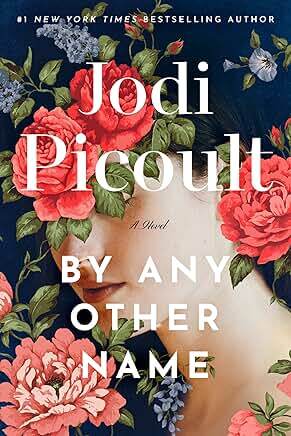
Many years ago, my book club read My Sister’s Keeper by Jodi Picoult. I was so outraged by the ending that I threw the book across the room and swore I would never read another book by her. And I’ve held to that resolution for nearly twenty years. So imagine my surprise when a good friend who had the same reaction to the same novel—and who faithfully attends the Shakespeare festival in Stratford, Ontario, every year—asked me to read By Any Other Name.
This is a novel about the difficulties women have in the world of theatre, both in Shakespeare’s day and in ours. It is a dual timeline story. The present-day story features Melina Green, a young woman whose earlier plays have been rejected as “too emotional.” Now she has written a work about her ancestor, the little-known Renaissance writer Emilia Bassano, but she’s too afraid of rejection to submit it to an important festival. So her best friend does it for her, under the masculine-sounding pseudonym Mel Green.
The other timeline, of course, features Emilia Bassano herself, who was a real historical figure. Bassano comes from family of Italian musicians who play at the court of Elizabeth I, but she is an orphan and a female, two disadvantages that make supporting herself by any profession—except the obvious one—an unlikely proposition. When she reaches the age of 13, her family arranges for her to be the courtesan of a much older and powerful man, the Lord Chamberlain who must approve all plays before they are produced. As is typical of such relationships, it doesn’t last. Trapped (once again by her family) in a miserable marriage to a man who wastes her dowry and abuses her, she must use her wits to survive.
Picoult has embedded within her novel an unusual theory about Shakespeare’s authorship. She proposes that Bassano wrote some of his plays, particularly those that feature strong women characters or details about court life and foreign places the man from Stratford would be unlikely to know. Picoult also tackles the broader question of whether Shakespeare wrote any of the works attributed to him, but I will leave that theory for readers of the novel to discover for themselves.
I really enjoyed this book and recommend it. I found both main characters engaging and wanted both to succeed. This is a first effort at historical fiction by Picoult, I believe, and I found the Renaissance details as vivid and concrete as the contemporary ones. The theory about Shakespeare’s authorship intrigued me. Although I wouldn’t go so far as to say I buy it completely, it has given me much to think about. I’m looking forward to a lively discussion during my next dinner with my Shakespeare-loving friend.
December 22, 2024
Sunday Review: The Porcelain Moon by Janie Chang
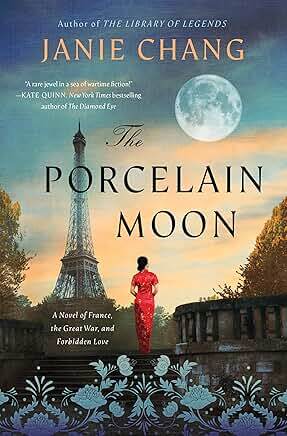
Did you know that more than 100,000 thousand Chinese laborers worked in Europe doing support labor during World War I? Neither did I until reading Janie Chang’s historical novel The Porcelain Moon.
The novel tells a dual story, both tales set during WWI. Pauline is an illegitimate Chinese girl, being raised by an uncle who runs a shop that sells Chinese porcelain and artifacts in Paris. Her parents are both dead, and no one in the family but her uncle and his son Theo cares about what happens to her. Pauline is approaching the age when she will be forced back to Shanghai for a marriage arranged by Uncle’s wife, who despises her and has no reason to make a good match. Theo is also facing a dreaded arranged marriage, a prospect he delays by taking a job as an interpreter for the Chinese Labour Corps.
The other plot line concerns Camille Roussel, a young woman trapped in an abusive marriage to a man who is bent on making money from the war by any means available. Camille lives in Noyelles-sur-Mer, near one of the labor camps. When Pauline comes searching for her cousin, hoping Theo will help her avoid being sent back to China, the two young women meet and discover they share a bond that neither has suspected. A bond that involves a dangerous secret.
The spotlight this novel shines on the overlooked contribution Chinese laborers made to the war makes it worth reading. Unfortunately, I didn’t think the intertwined story of the two young women was really a strong enough vehicle for this important subject matter. Honestly, for the first half of the book, I had trouble keeping the two storylines separate in my mind. You’d think that having one character be French and the other Chinese would be enough of a distinction, but for much of the novel, both are victims trapped in difficult circumstances, so the two character arcs are too much the same. Each character also has a love story, neither of which I found compelling. And the ending was just a bit too easy for my taste.
I wish I could recommend this more strongly. I loved The Phoenix Crown, Chang’s collaboration with Kate Quinn and was eager to see what she’d produce on her own.



